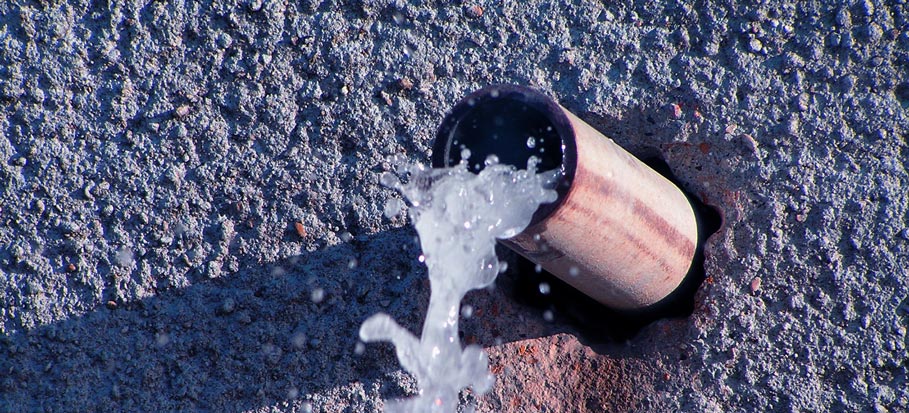6 Ways to Find Surprise Water Leaks in Your Home
6 Ways to Find Surprise Water Leaks in Your Home
Blog Article
This great article which follows in relation to Hacks to detect leaks is quite captivating. Try it and make your own assumptions.

Early detection of dripping water lines can alleviate a potential catastrophe. In addition to saving you cash, it will minimize the aggravation and also irritation. The minute you locate a leak, calling your plumber for fixings is the best option. Nevertheless, some small water leakages might not show up. If you can not discover it with your naked eyes, below are some hacks that help.
1. Take A Look At the Water Meter
Checking it is a guaranteed means that helps you find leakages. If it relocates, that suggests a fast-moving leakage. This implies you might have a slow-moving leak that might even be below ground.
2. Check Water Intake
Evaluate your water costs and track your water usage. As the one paying it, you need to see if there are any kind of discrepancies. If you find sudden changes, in spite of your usage coinciding, it means that you have leaks in your plumbing system. Remember, your water expense should fall under the exact same range on a monthly basis. An abrupt spike in your costs suggests a fast-moving leakage.
A consistent increase every month, also with the same practices, reveals you have a slow leakage that's additionally slowly rising. Call a plumber to thoroughly inspect your property, specifically if you really feel a warm area on your flooring with piping underneath.
3. Do a Food Coloring Examination
When it comes to water intake, 30% comes from commodes. If the color somehow infiltrates your dish during that time without flushing, there's a leak between the container and also bowl.
4. Asses Outside Lines
Don't fail to remember to examine your outdoor water lines as well. Needs to water permeate out of the link, you have a loosened rubber gasket. One small leak can waste heaps of water and increase your water expense.
5. Analyze the scenario and inspect
Homeowners ought to make it a practice to inspect under the sink counters and also inside closets for any bad odor or mold development. These two red flags show a leakage so timely interest is needed. Doing routine assessments, even bi-annually, can save you from a significant trouble.
Extra significantly, if you understand your home is currently old, maintain a watchful eye on your heating units, pipes, pipelines and so on. Check for stainings and also weakening as many home appliances and pipelines have a life span. They will certainly likewise normally weaken because of tear as well as wear. Do not wait for it to escalate if you suspect leaking water lines in your plumbing system. Call a professional plumber as soon as possible so you do not end up with a horrible mess in your house.
Early detection of leaking water lines can minimize a prospective catastrophe. Some small water leakages might not be noticeable. Checking it is a guaranteed way that assists you uncover leakages. One tiny leak can throw away lots of water and spike your water costs.
If you suspect leaking water lines in your plumbing system, don't wait for it to escalate.
WARNING SIGNS OF WATER LEAKAGE BEHIND THE WALL
PERSISTENT MUSTY ODORS
As water slowly drips from a leaky pipe inside the wall, flooring and sheetrock stay damp and develop an odor similar to wet cardboard. It generates a musty smell that can help you find hidden leaks.
MOLD IN UNUSUAL AREAS
Mold usually grows in wet areas like kitchens, baths and laundry rooms. If you spot the stuff on walls or baseboards in other rooms of the house, it’s a good indicator of undetected water leaks.
STAINS THAT GROW
When mold thrives around a leaky pipe, it sometimes takes hold on the inside surface of the affected wall. A growing stain on otherwise clean sheetrock is often your sign of a hidden plumbing problem.
PEELING OR BUBBLING WALLPAPER / PAINT
This clue is easy to miss in rooms that don’t get much use. When you see wallpaper separating along seams or paint bubbling or flaking off the wall, blame sheetrock that stays wet because of an undetected leak.
BUCKLED CEILINGS AND STAINED FLOORS
If ceilings or floors in bathrooms, kitchens or laundry areas develop structural problems, don’t rule out constant damp inside the walls. Wet sheetrock can affect adjacent framing, flooring and ceilings.
https://www.servicemasterbyzaba.com/blog/how-to-detect-water-leakage-in-walls/

As an avid reader about Finding hidden leaks, I figured sharing that piece of content was a good idea. Appreciated our entry? Please share it. Help somebody else find it. We recognize the value of reading our article about Locating water leaks.
Report this page